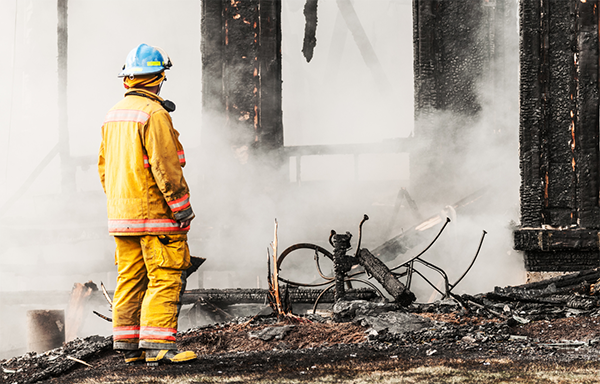Origin Before Cause: Fire Investigation Terminology

“Cause and Origin” was the terminology used in the fire investigation community, as well as in fire and arson textbooks like Robert Carter’s Arson Investigation, which was originally published in the 1970s. This terminology has since been replaced by a subtle, yet distinct alternate variation: “Origin and Cause.” The reasoning for this change is simple: the cause of a fire cannot be determined without first determining the origin of a fire. However, such a straightforward explanation of this correction does not fully appreciate its significance within a legal context.
The switch from “Cause and Origin” to “Origin and Cause” followed the publication of the first edition of NFPA 921: Guide for Fire and Explosion Investigations by the National Fire Protection Association (NFPA) in 1992. This guide, which continues to be updated every 3 to 4 years, focuses on using the scientific method when determining the origin and cause of fires and explosions. In the words of NFPA 921, 2024 ed., “Generally, if the origin cannot be determined, the cause cannot be determined.”
Before the terminology was corrected to “Origin and Cause,” an unknown number of citizens were adversely affected by the inaccurate connotations and understandings associated with “Cause and Origin.” Fire marshals made countless arrests and testified in civil courts operating with the information available in the 1970s and 1980s. Many citizens lost their insurance claims, while others went to prison, and some were even executed as a result.
In response to the growing acceptance and forensic applications of NFPA 921, admirable efforts were made to right the wrongs of the past by many organizations, often supported by attorneys and law firms offering pro bono assistance. One example of an arson case re-examined under new light following NFPA 921 is that of Daniel Dougherty. In 2000, a jury found him guilty on capital murder charges related to a 1985 house fire, which had resulted in the deaths of his two young sons.
An appeals court later granted Dougherty a new trial, acknowledging that his previous defense counsel had failed to challenge the potential scientific inaccuracies stemming from the initial investigation’s reliance on outdated techniques. Two prominent arson investigators separately reviewed the evidence of the original 1985 fire, including reports, testimony, and scene photographs.
Both investigators agreed that the damage to the room was so extensive that the origin of the fire could not be determined. These conclusions circle back to the crucial distinction introduced in NFPA 921: the cause of a fire cannot be determined without first determining the origin.
Recommended Resources
For additional information on the Dougherty case, read CNN’s 2010 article here.
“Historical Perspective on Arson Evidence,” a paper by Angelo Pisani, Ph.D., CFEI, presented at the FBI’s 1995 National Symposium on the Forensic Aspects of Arson Investigation, is accessible here.
Visit the NFPA website to learn more about fire safety, codes, and standards, or obtain the latest edition of NFPA 291 here.
Explore the NFPA Research Library and Archives for a trove of journal publications and reports from the Fire Protection Research Foundation, which are digitally available to the public here.

